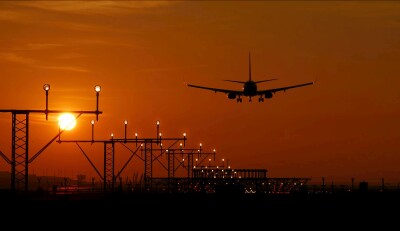Thanks to today’s drone technology, extinguishing fires to protect and save lives as well as physical properties has become an easier task for firefighters. Many fire departments have already adopted drones as a primary tool to increase firefighter safety and operational effectiveness, and are continuously looking for improved technologies to help them achieve their goals, such as electronic and gas sensors, heat-resistant materials, improved cameras, autonomous and swarm operations, and improved range and air time.
A Fire at an Oil Well Site
In 2014 and ahead of his time, a volunteer firefighter with the Windsor Severance Fire Rescue (WSFR), Mike Vickerman, incorporated a drone into his work with the ultimate goal to film as much of a fire as he could to learn what went wrong during the operation and what could go better. Little did he know that earlier this month, during a small fire at an oil well site, WSFR would perform the inaugural flight for a new drone and its pilot. By relaying high-definition video image from above the site and providing thermal imaging to observe the fire’s heat signature before fire crew members and site operators could safely re-enter the area, the drone was able to pinpoint the fire’s origin successfully and confirm it was extinguished.
“The use of UAVs in the fire service is rapidly expanding and WSFR is proud to be participating in this area of growth,” the department wrote. “WSFR worked in partnership with the site operators to ensure the hazard had been completely mitigated and using the UAV allowed personnel from both agencies to safely visualize the situation before entering the scene.”
Permanent Eyes in the Sky
Hellenic Petroleum, an energy group in South East Europe, believes live and persistent aerial imagery is a critical tool to help responders act efficiently and provide situational awareness of incidents that could span large areas of real estate, such as at refineries, where fire presents not only an immediate risk to life but can also create a natural disaster and have severe financial implications.
Together with the Greek national authorities, Hellenic Petroleum simulated a major accident where a fire broke out after the crash of a tractor into a pipeline junction connecting two Hellenic Petroleum Refineries and two other oil and gas companies. With a DJI Inspire 1 tethered to an Elistair Ligh-T power station, the company had an aerial overwatch that remained airborne for the whole duration of the exercise, providing the security manager and the head of the fire department with crucial deep knowledge of the situation to conduct the operation.
In a new partnership with the French group Desautel, Fotokite will provide French firefighters with immediate access to aerial RGB and thermal points of view during emergencies. As a manufacturer of protective equipment and fire and rescue vehicles, Desautel will integrate the Fotokite Sigma drone with its entire range of vehicles. With a single push of a button, Fotokite Sigma saves resources by launching, flying, and landing automatically with no piloting necessary. Recognized by aviation authorities as a safer alternative to traditional tethered drone and free-flying public safety drone systems, the actively tethered drone has a 24-hour flight time and supports a dual vision camera system consisting of a 256p 30fps thermal camera and a 720p 30fps RGB camera.
A Firefighting Drone for High-Rise Fires
Earlier this year, EHang, a passenger drone company, launched the EHang 216F, a drone designed for high-rise firefighting. Featuring six fire extinguisher bombs, a laser aiming device, a visible light 10x zoom camera and carrying up to 150 liters of firefighting foam in a single trip, EHang expects to deploy the 216F drone in urban fire stations to assist in firefighting within a 5km radius.
“Firefighting and rescue is a race against death. By taking advantage of the rapid response and centralized management of the EHang AAV platform, we can greatly improve the effectiveness of our efforts,” said Weiqiang Chen, the head of a fire station in Yunfu. “EHang’s intelligent aerial firefighting solution can effectively solve difficult problems in fighting high-rise fires. This complements existing firefighting systems and will improve society’s ability to respond to emergencies.”
Fighting Fires by Setting Fires from Above
Due to the thick smoke and cloud layers during the Marin County fire back in August, no manned aircraft could be assigned to the operation. This allowed firefighters to use drones to help them put it out.
While most firefighting operations use drones to improve situational awareness, Drone Amplified developed IGNIS, a safe and affordable fire ignition management system for drones. By carrying a payload of ping-pong size chemical spheres injected with glycol, firefighters can use the drone to drop these spheres precisely where they want them to start a chemical reaction and generate flames.
These are only some of the more recent stories out there regarding drones and how they’re helping public safety agencies and departments become more efficient. The drone industry continues to expand every day, providing new software and hardware solutions that help current and new businesses grow.
















Comments